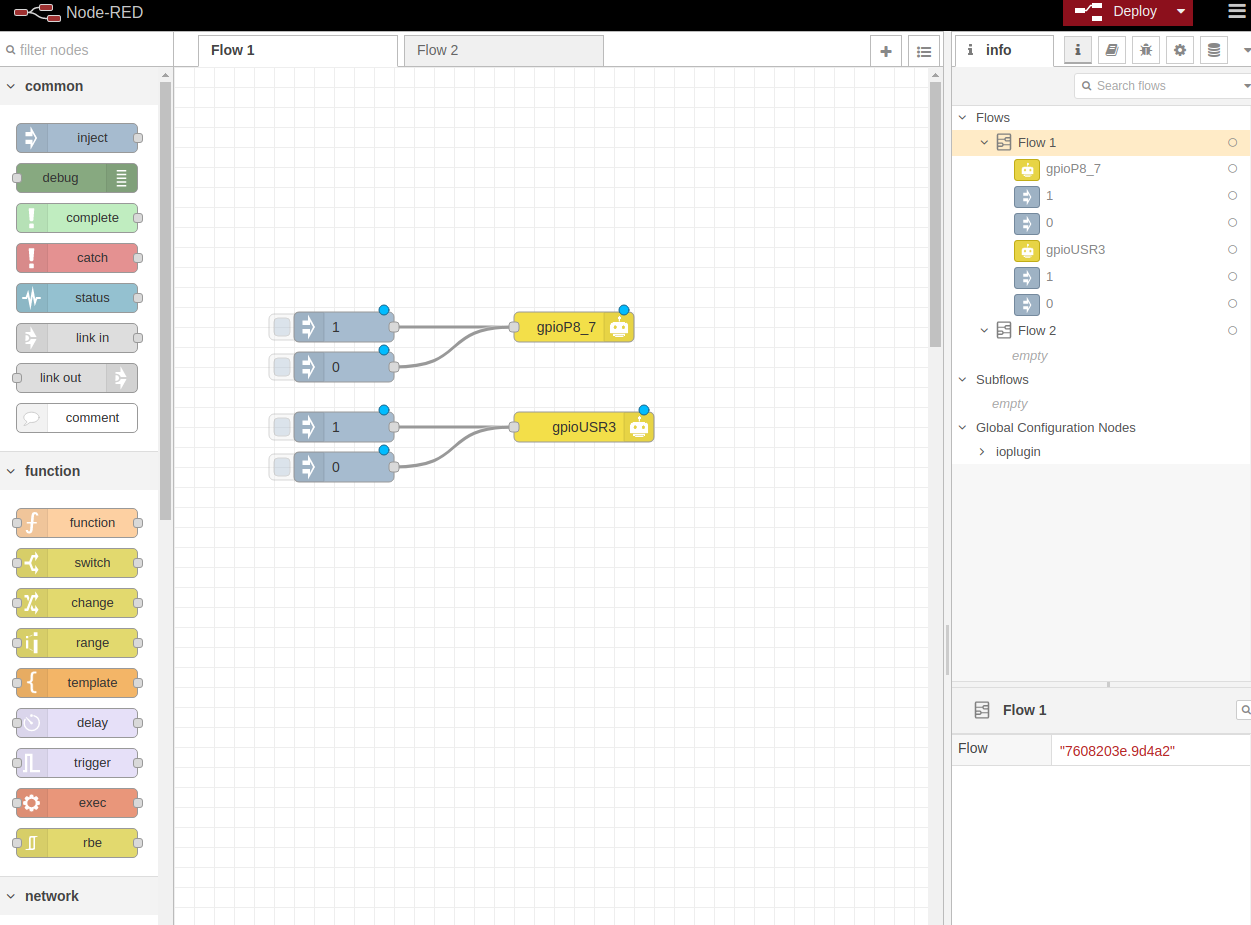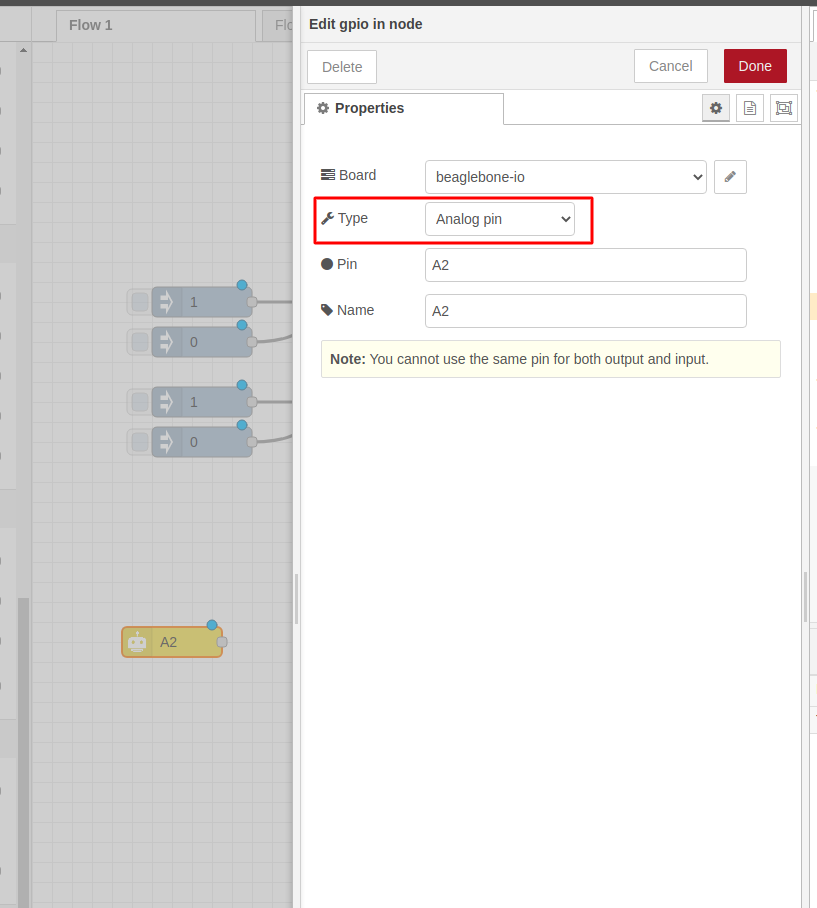I have been working with beaglebone green wireles and node red, I need to use the seed grove sensors,
but I can't find NODES FOR GROVE that works with BBGW, I know there is an image that already includes it, can you
please tell me which image it is and where to find it?
Nodes for Grove, do you have a link to that project?
Regards,
Robert, are there a Nodes for Grove group? or or what does your question refer to?
As an additional reference, I read this article (https://tech.scargill.net/beaglebone-green-wireless/ ) in which they mention that there is NODES FOR GROVE included in an image for BBGW.
Oh, that was from 2016, that ended. It was replaced in a generic way..
Here is a quick example..
https://gist.github.com/RobertCNelson/db447839232261a054af8008440d86b4
Just click import, it'll look like attached..
Just make sure you have the latest version of bb-node-red-installer to
fix a gpio issue..
debian@beaglebone:/var/lib/cloud9$ dpkg --list | grep node-red
ii bb-node-red-installer
1.2.2-0rcnee2~buster+20201021 armhf Node-RED
installer for beagleboard.org
Regards,

Thanks a lot Robert, it works!
What about sensors? Do you have an example? I have a Seeed Temperature Sensor, using node-red how can I get temperature?
Sliding into this thread...
What about sensors? Do you have an example? I have a Seeed Temperature
Sensor, using node-red how can I get temperature?
Seeed/Grove has many types of temperature (and humidity) sensors.
Is a thermistor design. It outputs an analog voltage which you then scale
(using parameters provided in the documentation) to determine the
temperature. PROBLEM: Beaglebone ADC inputs max at 1.8V; if you power this
version with a 3.3V feed, you will need to use a voltage divider to reduce
the 0.0-3.3V output into 0.0-1.8V. You also need to connect it to one of
the pins that is configured as ADC input, NOT GPIO.
uses a DHT-11. The DHT-11 has a very complex protocol in which one has to
measure the length of high/low pulses to determine if a 1 or 0 bit is being
output. Using compiled (C/C++ or assembler) MAY allow a program running in
the Linux realm to successfully read such a unit, but native Python or
Javascript (which, as I understand it, is what gets run through the
Node-Red interface) is not fast enough to reliably read one of these.
uses the BME280 chip. This sensor has both I2C and SPI interface modes.
Reading such requires connecting to pins that are configured for either I2C
or SPI, and issuing commands followed by reading the return data. The good
news, the data IS in binary (it may need some scaling, but has no analog to
timing based problems).
is another I2C interface type
is a Dallas Semiconductor (now Maxim) "1-wire" protocol
So the "Beaglebone-io" library that i used in that example can do analog..
Here's the full readme:
https://www.npmjs.com/package/beaglebone-io
Sorry i don't have an example, from Johnny5 grab the gpio-in, then
change it to "analog pin".. (attached..)
Regards,

That seems to work pretty well..
Regards,

I was finally able to test the Grove Temperature sensor V1.2, it works great with the BBGW. Thank you very much Robert for your help. Dennis was very useful to me the information, I thank you very much for your support.